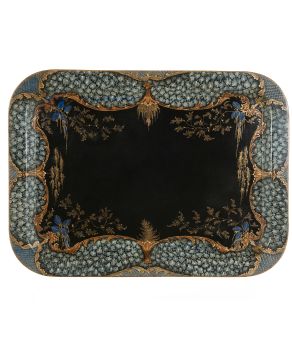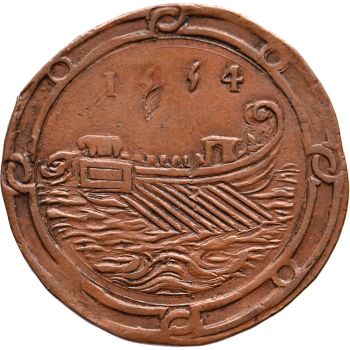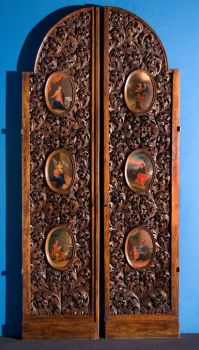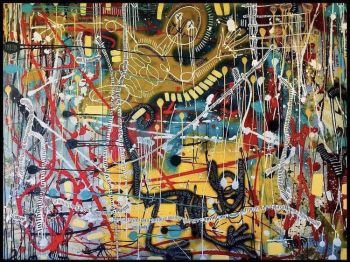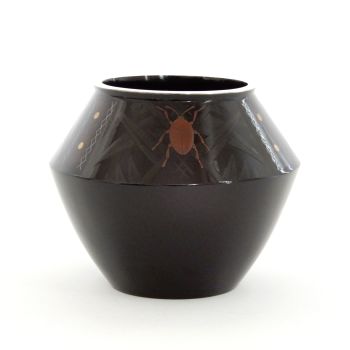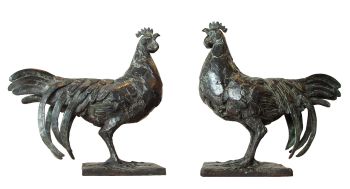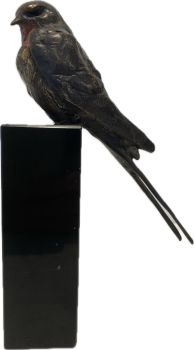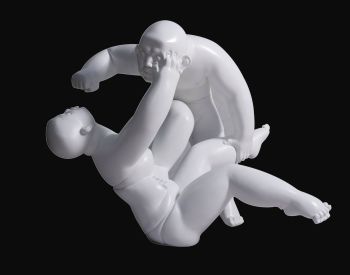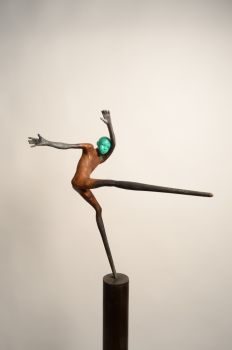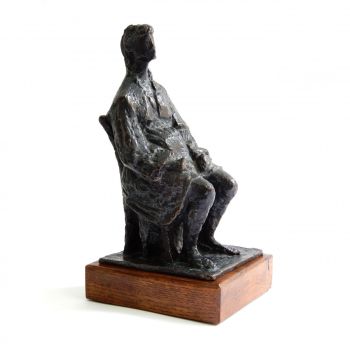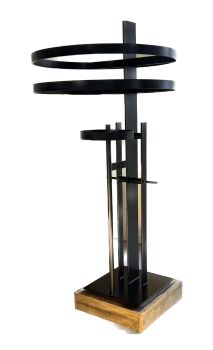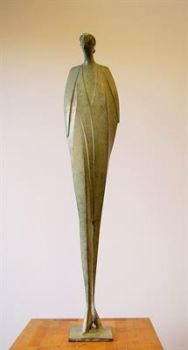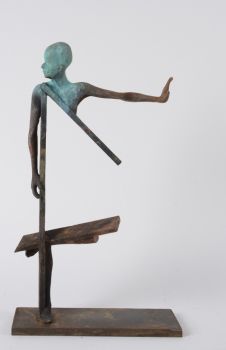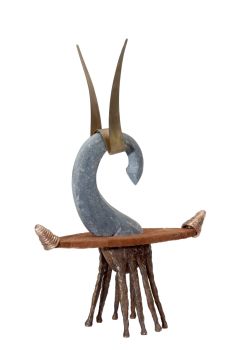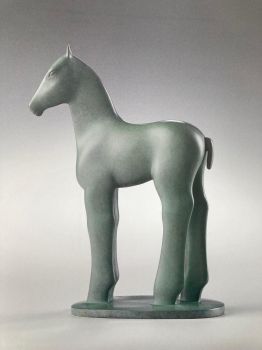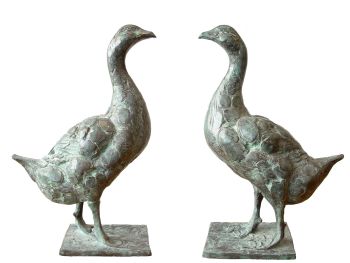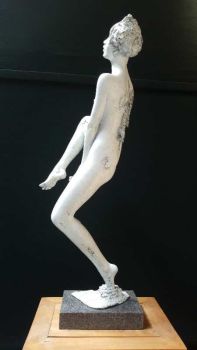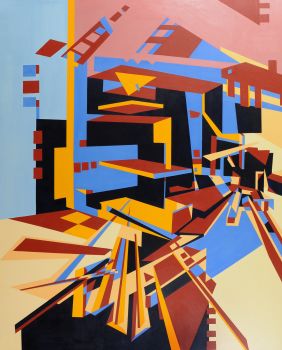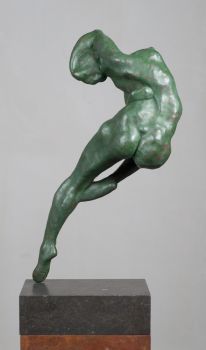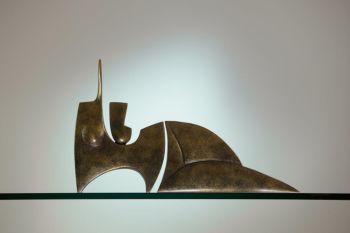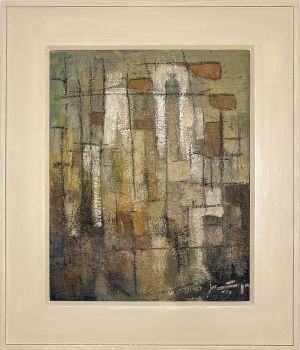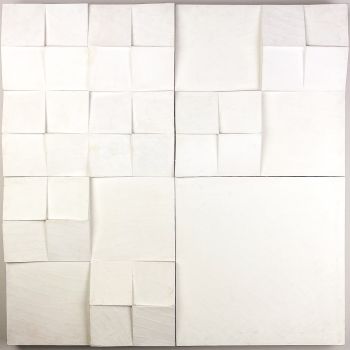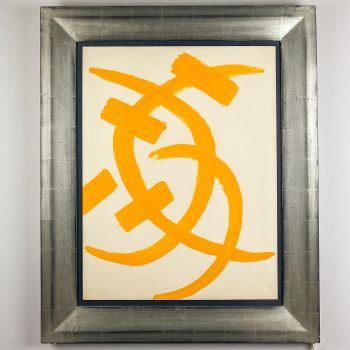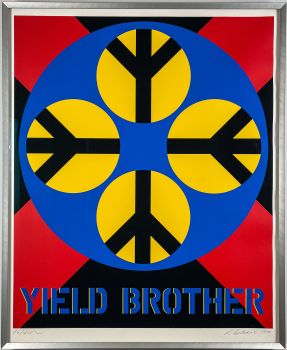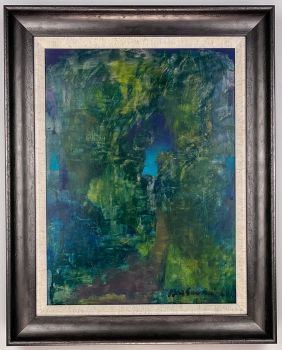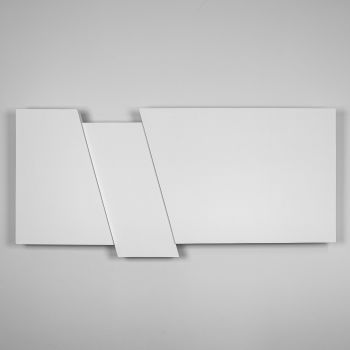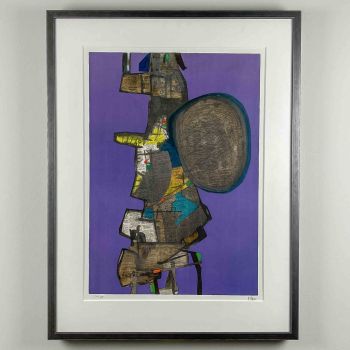A multicoloured enameled copper deep plate – 1960’s or 1970’s 1960 - 1979
Saara Hopea
MetalloRame rossoSmalto
4 cm, ø 19 cm
ConditionVery good
€ 750
Van Kerkhoff Art
- A proposito di opere d'arteA multicoloured enameled copper deep plate, with spot textured areas. Handmade by Saara Hopea in her own workshop in the 1960’s or 1970’s. The plate is signed on the reverse by the artist in diamondpen: Saara.
Saara Hopea started making these copper enameled plates in 1960 when she lived in New York City. The enameling on copper she learned from her husband Oppi Untracht who taught enameling at the Brooklyn Museum Art school. In a very short time she mastered this craft and in the early 1960’s several of her plates were bought by the Museum of Modern Art. The copper plates Saara Hopea used were hand lathe spun by Abram Bender in New York.
Saara’s enamel work was interupted between 1963 and 1967 when she lived in India and Nepal. When she moved back to Finland she established a new workshop in Porvoo. She kept making these enameled plates by hand until 1980.
About Saara Hopea
Saara Elisabet Hopea (Porvoo 1925 – Porvoo 1984), a prominent Finnish designer renowned for her innovative creations in art-glass, furniture, and jewelry, left an indelible mark on the world of design during her lifetime. Born in 1925 in the scenic town of Porvoo, situated in the southern region of Finland, Hopea’s artistic prowess and unwavering dedication to her craft propelled her to international recognition.
The daughter of Ossian Hopea and Lempi Westerlund, who owned a reputable goldsmithing company, Hopea was exposed to the world of design from an early age. After completing her secondary education, she honed her skills at the Interior Design Department of the Central School of Art and Design, now known as the esteemed Aalto University of Art and Design.
In 1946, Hopea proudly graduated, armed with a wealth of knowledge and a burning passion for design. She embarked on her professional journey as an illustrator before joining the lighting factory of Taito Oy, a renowned establishment under the guidance of celebrated designer Paavo Tynell.
However, it was in the early 1950s that Saara Hopea found her true calling when she delved into the realm of glass design. With an innate talent and an insatiable curiosity, she joined the Nuutajärvi glass factory, where she had the privilege of working alongside the esteemed artistic director, Kaj Franck.
In 1959, tragedy struck as Hopea’s father passed away, and she courageously took the helm of the family business, Ossian Hopea Oy. As the artistic director from 1959 to 1960 and later from 1967, she left an indelible mark on the company’s direction and was responsible for numerous iconic jewelry designs.
Her creative journey took an unexpected turn in 1960 when she married Oppi Untracht, an accomplished American goldsmith, photographer, and writer. Together, they embarked on an adventurous life that led them to reside in New York City, Nepal, and India, before eventually settling in Porvoo in 1967.
Hopea’s exceptional designs earned her widespread acclaim and accolades. Her glass creations were honored with silver medals at the esteemed Milan Triennials in both 1954 and 1957, showcasing her mastery of the craft on an international stage. She also received notable recognition closer to home, including the prestigious Porvoo City Culture Prize in 1981 and the State Arts and Crafts Prize in 1982.
Today, Saara Hopea’s impact resonates globally, with her works showcased in renowned institutions. The British Museum in London boasts an impressive collection of 28 of her pieces, while the Museum of Modern Art (MoMA) in New York proudly displays 11 of her distinctive creations.
Although she left this world in 1984, Hopea’s artistic legacy continues to inspire and captivate design enthusiasts. Her retrospective exhibition at the Museum of Arts and Crafts in Helsinki in 1987 served as a testament to her enduring influence, ensuring her innovative designs remain cherished and celebrated for generations to come.
Marked
Marked in diamondpen underneath the base: Saara
Execution
Made in her own workshop: 1960-1963; 1967-1979
Condition
This plate is in very good vintage condition. No chips, no dents. some minor scratches.
Literature
Oppi Untracht – Saara Hopea-Untracht: her life and work. P. 202-213
Dimensions
Height 4 cm
Diameter 19 cm
Weight 287 grams - A proposito di opere artista
Saara Hopea ha avuto una prolifica carriera in vari campi del design, lasciando un segno significativo nel panorama artistico finlandese degli anni '50. Il suo viaggio è iniziato nel regno del design di mobili, dove ha affinato le sue capacità dal 1946 al 1948. Alla ricerca di nuove opportunità, ha poi unito le forze con l'azienda del famoso fabbro Paavo Tynell, dove ha lavorato fino al 1952.
Durante questo periodo, ha contribuito alla vetreria Nuutajärvi, dove le sue creazioni sono diventate una brillante incarnazione dell'estetica minimalista che ha definito lo stile finlandese negli anni '50, influenzato dai principi della filosofia del design Bauhaus. In particolare, dopo la morte del padre nel 1948, ha assunto l'incarico di progettare l'argenteria per il suo negozio a Porvoo.
Un punto di svolta nella vita di Hopea si è verificato quando si è sposata e si è trasferita a New York con suo marito. Fu qui che iniziò un nuovo percorso artistico, esplorando il regno della lavorazione dello smalto. Attraverso la sua sperimentazione con smalti trasparenti a cottura eccessiva su rame, ha ottenuto risultati notevoli che hanno conferito ai suoi pezzi un aspetto spontaneo e pittorico, caratterizzato da colori vibranti e notevole profondità. Le sue squisite creazioni smaltate sono finite nelle mani di mecenati esigenti attraverso negozi esclusivi.
La sete di conoscenza e l'ispirazione artistica della coppia li ha portati a intraprendere un viaggio straordinario attraverso il Nepal e l'India, durato quattro anni. Durante questo periodo, si sono immersi nello studio, nella fotografia e nella raccolta di oggetti in metallo e gioielli locali. Nel 1997, suo marito, profondamente influenzato dalle loro esperienze, ha pubblicato "Traditional Jewelry of India", una testimonianza della loro esplorazione e apprezzamento del ricco patrimonio artistico della regione. Nel 1967 tornarono a Porvoo, dove gli sforzi artistici di Hopea comprendevano un'ampia gamma di discipline, tra cui l'oreficeria, il design tessile e la smaltatura.
L'impatto del talento e dell'arte di Saara Hopea si estende oltre i confini della Finlandia. Il British Museum vanta una collezione di 28 delle sue opere, mentre il Museum of Modern Art custodisce 11 oggetti preziosi, testimonianza della sua eredità duratura. Nel 1988, suo marito ha pubblicato un resoconto completo della sua vita e del suo lavoro intitolato "Saara Hopea-Untracht: vita e lavoro", facendo luce sullo straordinario viaggio artistico di questa tranquilla visionaria scandinava.
Sei interessato ad acquistare questa opera d'arte?
Artwork details
Related artworks
- 1 - 3 / 3
- 1 - 4 / 24
Artista Sconosciuto
Chinese carnelian agate vase or brush washer, 18th/19th century, Qing dynasty1720 - 1820
Prezzo su richiestaMenken Works of Art
Artista Sconosciuto
Chinese gilt bronze censer, Xuande mark, 18th century, Qing dynasty18th century
Prezzo su richiestaMenken Works of Art
Artista Sconosciuto
Two Centaurs, France or Italylate 18th
Prezzo su richiestaRobert Schreuder Antiquair
Artista Sconosciuto
A white jade ‘Lotus Seedpod and Bug’ carving, Qing dynasty, 18th century18th century
Prezzo su richiestaMenken Works of Art
Artista Sconosciuto
Japanese art deco lacquervase with Scarab beetle motif1920 - 1950
Prezzo su richiestaDille Art
1 - 4 / 24- 1 - 4 / 24
- 1 - 4 / 12















































